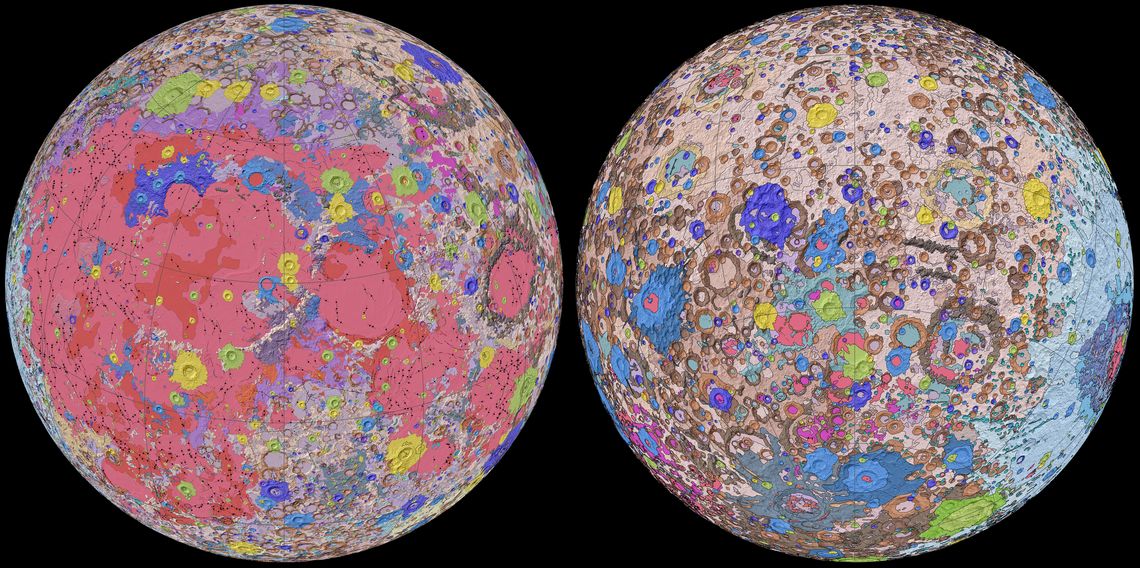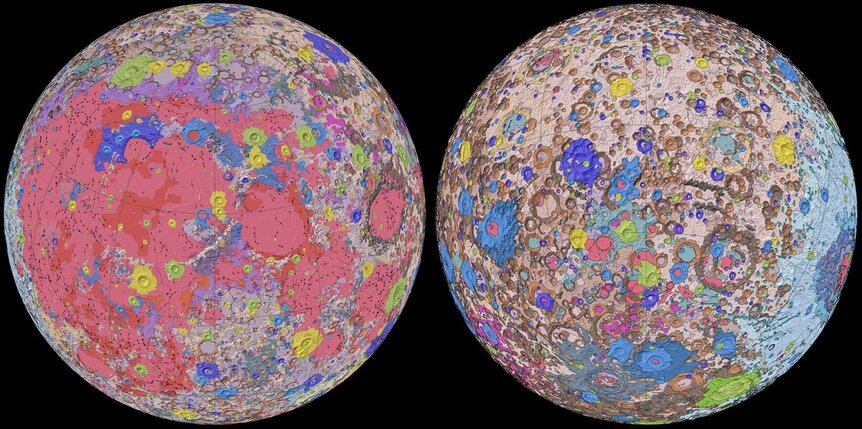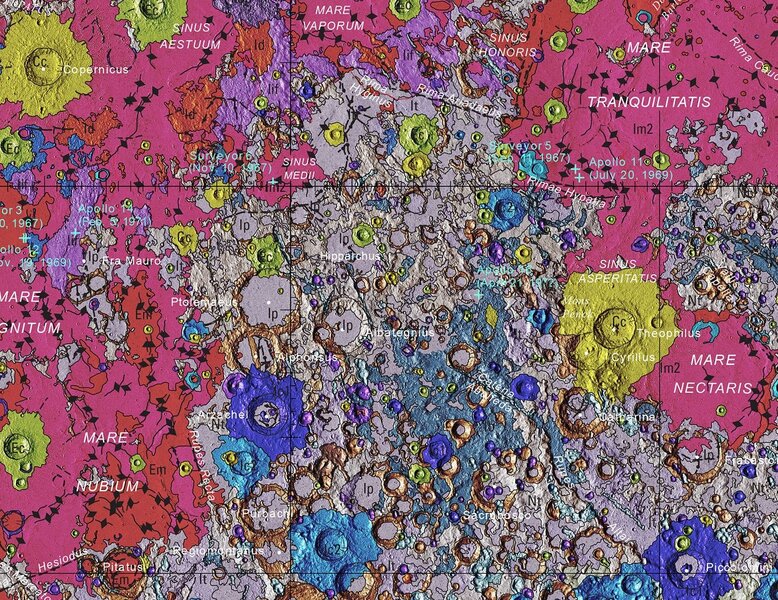Create a free profile to get unlimited access to exclusive videos, sweepstakes, and more!
Embark on a lunar odyssey with this stunning new global map of the moon

In honor of our beloved satellite, a group of lunar-loving researchers at the U.S. Geological Survey, the Lunar and Planetary Institute, and the South Dakota School of Mines and Technology has composed a first-ever, globally consistent, 1:5,000,000-scale geologic map of the Moon — and it's a spectacular sight to behold!
These colorful orthographic projections display the geology of the Moon’s near side and far side with tinted topographical data compiled and added from NASA's Lunar Orbiter Laser Altimeter.
This striking new downloadable digital map, known as the "Unified Geologic Map of the Moon," will officially reign as the definitive modern blueprint of the Moon’s surface geology for future lunar missions. Its comprehensive rendering will also stand as a vital resource for astronomers, engineers, scientists, astronauts, teachers, and amateur skygazers worldwide.
“This map is a culmination of a decades-long project,” said lead author Dr. Corey Fortezzo, a geologist at the U.S. Geological Survey. “It provides vital information for new scientific studies by connecting the exploration of specific sites on the Moon with the rest of the lunar surface.”
Fortezzo and his colleagues rounded up information from vintage Apollo-era regional maps of the Moon for their unique synthesis.
Elevation info for the Moon’s equatorial region came courtesy of stereo observations gathered by the Terrain Camera on JAXA’s Selenological and Engineering Explorer (SELENE) mission. Topography for the north and south poles was supplemented with data from the Lunar Orbiter Laser Altimeter (LOLA) on board NASA’s Lunar Reconnaissance Orbiter. Historical maps were recalculated and redrawn to align them with the modern data, while still preserving older observations and interpretations.
"The next step for this digital product is to create a paper copy of the map through the USGS Publication Services Center," Fortezzo tells SYFY WIRE. "That is likely going to take some time with finishing our text and other required map components, the internal peer review process, technical edits, and cartographic standardization.
"We're currently estimating a first quarter 2021 print date, depending on the queue at the USGS Publication Services Center. We wanted to get the GIS files out for the science community to use and possibly break, and added the .jpg layout for broader public access."
To create this highly detailed cartographic masterpiece, Fortezzo's team developed a unified description of the specific rock layers of the Moon and corrected issues from older maps where rock names, inconsistent descriptions, and different ages might have had some discrepancies. The final map consists of 43 geologic units spread across the entire lunar surface. These units are then broken down into specific groups based on their attributes and include materials of craters, basins, terra, and plains.
“Making a map like this is not easy. It was a huge effort for our team to complete this new map and make it seamless,” said U.S. Geological Survey Astrogeology Director Dr. Justin Hagerty. “Much of the historical mapping was performed by various groups and at regional scales. Slightly different methods were used, so that maps of the same feature that had been mapped by different groups would not match.”
This orthographic Moon map is a digital-only release presented in both GIS and PDF formats and can be downloaded HERE.




























